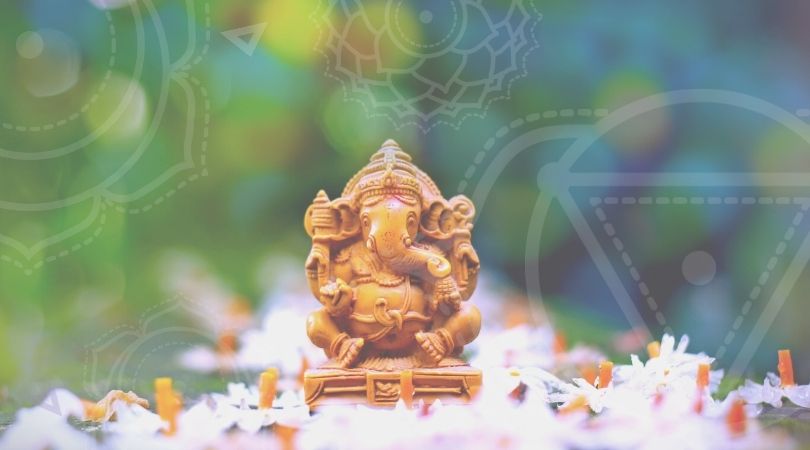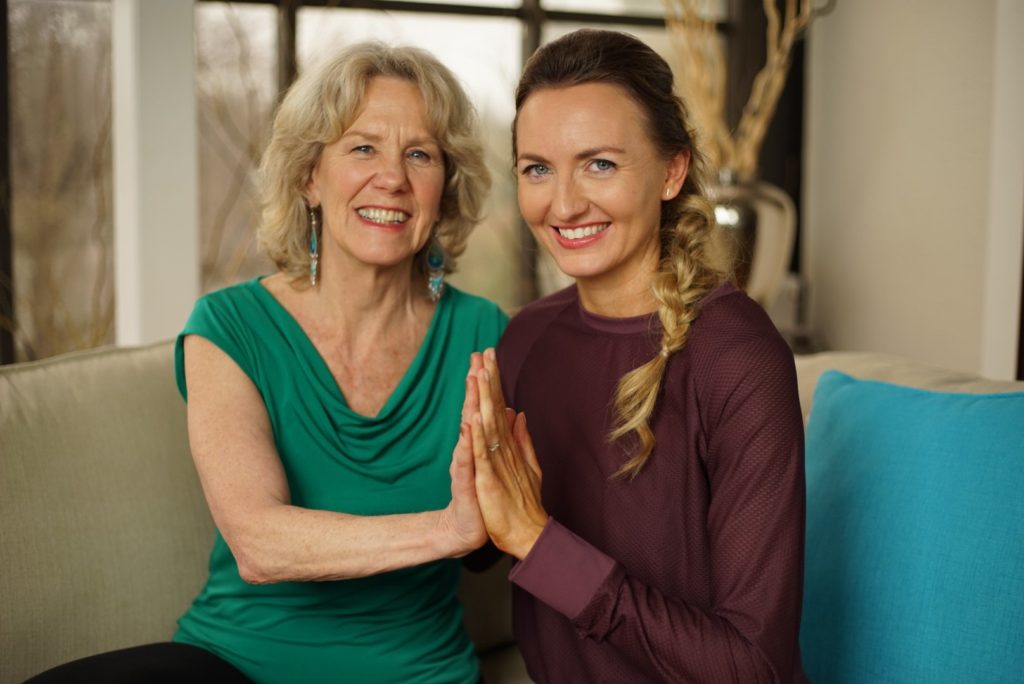
Have you ever been nervous about getting that new promotion, doing well on a test, or whether your significant other will stay with you? I think we’ve all done at least one of these, right?? Hey, it’s normal!
We often spend a lot of time worrying about what might happen, which in turn leaves less time to appreciate the present moment. We get attached to predictions, rather than what’s actually going on.
That’s where Aparigraha can help! In this article, we’ll dig into all things Aparigraha, how it can benefit you, and tips for how to practice it.
What Is Aparigraha? Non-Attachment
At its essence, Aparigraha means non-possessiveness or non-attachment, but let’s break this down a bit more. The word ‘graha’ means ‘to take, seize, or grab,’ ‘pari’ means ‘on all sides,’ and the prefix ‘a’ means ‘non.’ So, altogether, you get to not grab or take on all sides.
It’s the art of reducing what you need and keeping yourself to just what you need. When you do that correctly — it can be SO liberating!
Aside from possessions, Aparigraha also shows us how to dwell in the present moment, letting life take us where it may without trying to micromanage it.
Becoming attached to expectations for the future or positive emotions is a natural human trait, however, it’s also important to remember that everything changes. Consider the Sanskrit word ‘Parinamavada’, which means that ‘everything is in a constant state of flux,’ in nature, in our body, and our life experience.
By letting go of what no longer serves us, we open ourselves up to new ideas, new relationships, and more symbiotic ways of living with each other. And that’s the practice of Aparigraha.
Aparigraha in Yoga: The Fifth Yama
The Yamas are a part of Patanjali’s Eight Limbs of Yoga, and the fifth and last Yama is Aparigraha.
The Yamas, also known as moral guidelines, are mainly interested in our surroundings and our relationships with them. You can use these ethical codes (Ahimsa – non-violence, Satya – truthfulness, Asteya – non-stealing, Brahmacharya – chastity, and Aparigraha – non-coveting) both on and off the yoga mat, first through your asana practice and the practice of the specific mudra and mantra that awakens Aparigraha, and then through deep work with the mind and spirit.
This last Yama (also the moral excellence of non-possessiveness in Jainism) teaches us to retain only what serves us in the present, while at the same time being able to release something the second we realize that it’s not useful anymore.
Patanjali’s Yoga Sutra teaches that when we practice the Yamas and Niyamas, it leads us closer to spiritual awakening (‘samadhi’). More specifically to Aparigraha, the role of this last Yama is to enable the yogi to comprehend that they encapsulate all the necessary knowledge within. When we let go of any material possession and misleading attachment, we can embrace change, experience joy and gratitude, and follow the path towards connection to the true self on a profound level.
Why Is Aparigraha Important?
Aparigraha is much more than a form of controlling one’s greed — it’s a genuine regard for other beings and the environment. It shows us the path towards self-respect and self-enlightenment, which we can then follow without material bondage dragging us down.
How Does Attachment Cause Suffering?
We grasp and yearn for things in an attempt to find joy, security, and contentment — makes sense. We’ll also hold onto things we already have for fear of losing them. But here’s the thing: nothing lasts forever and loss is unavoidable. If we cling to things, it just sets us up for disappointment.
According to Buddhism, the only constant in the universe is ‘change’. When you desire and try to grasp, you are attempting to manipulate and stabilize your life (understandable), and consequently, suffering will ensue because you’re opposing the forces of the cosmos.
The Benefits of Practicing Aparigraha
There’s nothing wrong with enjoying material goods and appreciating their convenience — hey, who doesn’t like a tasty ice cream cone or comfortable bed? The issue occurs when that momentary enjoyment gives way to greed and constant consumption, which forms a grasping habit.
This is why non-grasping is crucial, as it transmits all the necessary knowledge to make us satisfied with only what we need, and therefore changes our perspective of life and ourselves. Aparigraha frees us from possessiveness and its impacts on us, showing us the way towards inner peace.
Check out these many benefits of Aparigraha:
- Increased time, spirit, and vigor, due to the handling of fewer things.
- Increase of resources, due to the purchase of fewer things.
- More space for kindness and generosity, as the individual will have more resources available to help others in need.
- Greater sense of freedom, as the individual will not need to work extra to be able to purchase unwanted materials.
- Decrease of anxiety and stress, due to the elimination of a material-gain obsession.
- Reduction of the environmental burden, due to the decrease of demand.
- Role model behavior, which will be a great example for the next generations.
- Elimination of negative emotions, such as jealousness and low self-esteem. Aparigraha removes the tendency to flaunt and compare ourselves to others.
How Do You Practice Aparigraha? 6 Ways to Let Go of All Attachments
But how can we cultivate non-grasping, non-attachment, and non-possessiveness in our lives?
Here are several tips to practice the art of ‘what is needed’, not only through your yoga practice on the mat but also through your self-care, mitigation of the ego, and the art of letting go.
1. De-Clutter
Discard everything you don’t need to free up space in your closets… and your life. You can pull a Marie Kondo and evaluate your possessions and ask yourself, “Does this bring me joy?” If it doesn’t, thank it for all its service, and give it away. And if it does, consider why.
2. Non-Attachment On The Mat
In the context of a yoga class, aparigraha helps us celebrate our abilities, instead of comparing our asana practice to others. Therefore, it will bring us closer to the real essence of yoga, enabling us to practice from our heart and release negative thoughts, rigid beliefs, and past experiences that don’t serve us anymore.

Include Aparigraha on the mat with an asana pose, the Noose Pose, the ‘Om gam ganapatayei namaha’ mantra (calling upon Ganesha), and the Ganesha Mudra to embody the profound ways the yama unfolds in your life. Notice the connection between the Noose Pose and the breath. This helps extract unnecessary concerns and reinforces gratefulness for all you have. Finally, use the mantra to invoke Ganesha with each exhale, and the mudra to ensure mind-body connection.
3. Let Go of Unhelpful Routine and Expectation
Train yourself to adapt and move forward. Unhelpful anticipations and practices can hold you back from growing and achieving your goals. However, to let go, you need to work in-depth with the self. Practice awareness, acceptance, and appreciation for the present moment and release any resentment.
4. Take Out Food Cravings
According to the yoga philosophy, and more specifically to Hatha Yoga Pradipika, overeating is a hindrance for the yogi. You should always enjoy your food and nourish yourself, however, always listen to your body and observe when you reach satisfaction.
Remember the golden rule of ‘Hara Hachi Bu’, meaning ‘eat until you are eight parts full’. In other words, try to eat until about 80% full, to let your body digest and absorb food correctly.
5. Non-Attachment in Relationships
Aparigraha teaches us how to cultivate a feeling of connection and togetherness to everyone without getting overly attached or jealous around others. You can still care for others and feel connected with your loved-ones, but remember that both things and people come and go from our lives. Practice being okay with this and avoid getting overly dependant on others in your relationships.
Can You Love Without Attachment?

“Once we know our freedom is respected, we can more easily make a commitment. Conversely, the more a partner insists on one aspect, the more his lover will yearn for its opposite. Dynamic balance is a dance between attachment and freedom.”
– Eastern Body Western Mind Psychology and the Chakra System As a Path to the Self by Anodea Judith
Imagine loving without selfishness or the need to abandon your independence. It is possible! To establish such a connection, one needs to shift the focus from how much to how love is manifested in the relationship.
We tend to want our partners to adjust to us, feed our ego, and make us feel complete while forgetting that our true happiness and contentment comes from within. This unbalanced dynamic comes from the modern society that wants us to rely on external factors to experience happiness. In reality, you absolutely can love those around you without feeling the need to control or own them — and actually, this can make your love even stronger and more free.
Think of how you love the sun and the flowers. They don’t belong to you, but this does not lessen your gratitude for having them in your life.
Next Steps
- If you’re interested in practical kriya yoga as a way to improve your daily life and relationships, check out my Yoga for Self Mastery course.
- Order my Yoga Life book for a practical guide to creating balance in your life through yoga.
- Check out my YouTube channel and find some yoga classes that you can try out for yourself!
Experience 3 Training Videos from Inside My 200-Hour Online YTT

YOU MIGHT ALSO LIKE
- What is Kriya Yoga? The Philosophy and Practice
- Uddiyana Bandha: Tapping Into Your Deep Core
- 4 Reasons Hasta Bandha Is Essential To Your Yoga Practice
- Vitarka Mudra: What It Is and How Do You Use It?
- Shakti Mudra: What It Is and How Do You Do It?
- Garuda Mudra: What It Is and How Do You Use It?
- Kali Mudra: What It Is and How Do You Do It?
- Shunya Mudra: What It Is and How Do You Do It?
- Varuna Mudra: What It Is and How Do You Use It?
- Vayu Mudra: What It Is and How Do You Use It?
- Samana Vayu: The Energy of Balance & How to Access It
- Apana Vayu: The Energy of Release & Surrender
- Udana Vayu: The Ascending Wind
- Prana Vayu: The Breath of Vitality
- Vyana Vayu: The Energetic Secret to Flow
Learn how to do 11 of the most popular yoga poses correctly. Free video + PDF download.












